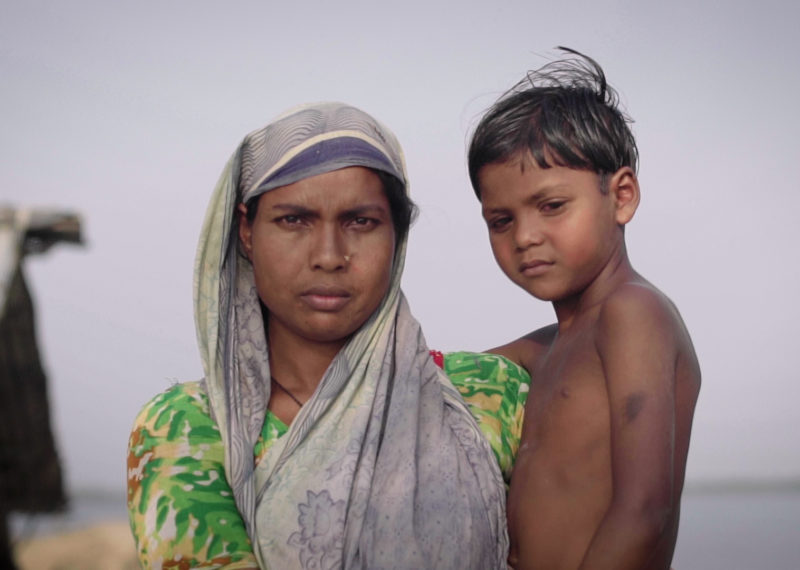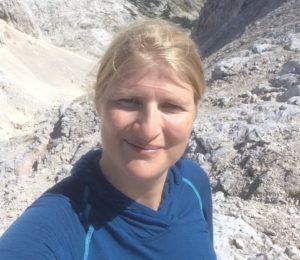Nurnahar and her family have seen the climate crisis take everything. They live in Bangladesh, a country where two-thirds of the land is less than 5 meters above sea level and increasingly severe cyclones funnel up the Bay of Bengal. Sea level rise, cyclones, drought, erosion, landslides, flooding and salinization are already displacing large numbers of people. By 2050, estimates suggest one in every seven people in Bangladesh will be displaced by climate change. Up to 18 million people may have to move because of sea level rise alone.
Nurnahar, the mother of two young sons and a daughter, told the Environmental Justice Foundation about the disasters that have befallen her and her husband, Harun. Their first house was destroyed in a storm, and with nowhere to go, they were forced to take the children and live in a tent by the side of the road. That makeshift shelter offered even less protection and soon was also lost in a storm. For two years, the family lived on a boat, a cramped struggle with three children. Finally, they were at last able to rebuild their house again, only to see it destroyed by Cyclone Amphan in May 2020. This super cyclonic storm affected over a million people in the country, costing an estimated $1.5 billion in damages.
“On this side of the riverbank, I stayed on a boat for two years. […] It was really difficult to stay on the boat for two long years with my children. After a lot of requests, we got this piece of land to build a house. But Cyclone Amphan again made me homeless,” says Nurnahar.
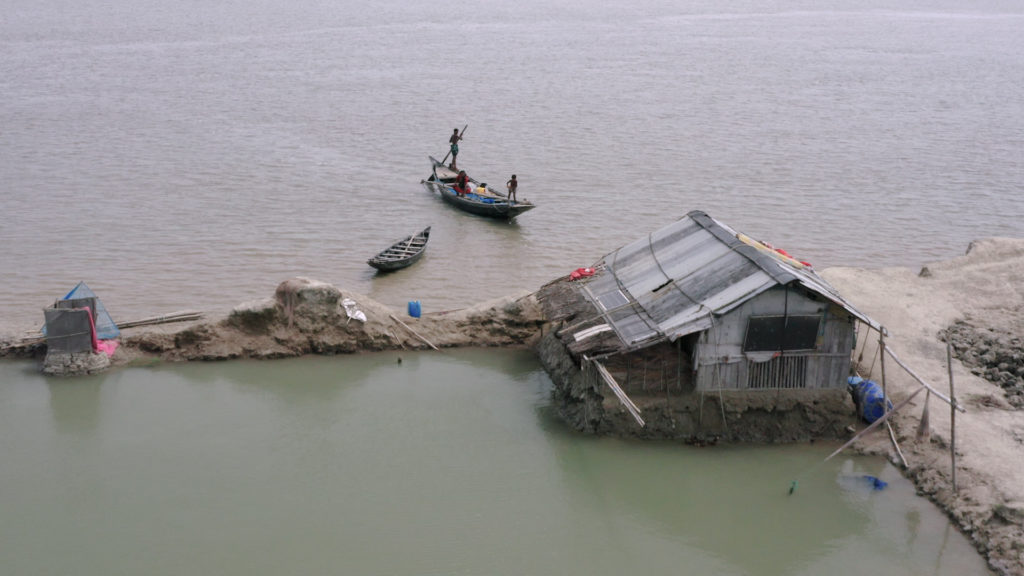
The family house. Credit: Environmental Justice Foundation
Today, they live in half of a house, repaired from what was left, but without money to restore it fully. “Now, we have repaired one side of our broken home and are living here somehow,” says Nurnahar. “I don’t know when this one will get broken or damaged in another storm. There is no guarantee. Only God knows what may happen and what can be done. Another storm could sweep away everything. Then we will be homeless again and living on the street like the animals.”
The family describes the night that Cyclone Amphan hit: “I have never seen such a cyclone in my life. It swept away all we had,” says Nurnahar.
13-year-old Nayeem also remembers the night vividly: “The wind was really frightening, and the waves were really scary. The house collapsed and flooded. The roof flew into the river. There was nothing left […] I used to feel good before Amphan, but now I fear storms whenever the wind gets up. I am frightened to lose my house to heavy rain and cyclones. [If another cyclone comes] I will be frightened. Where will I go and where will I live?”
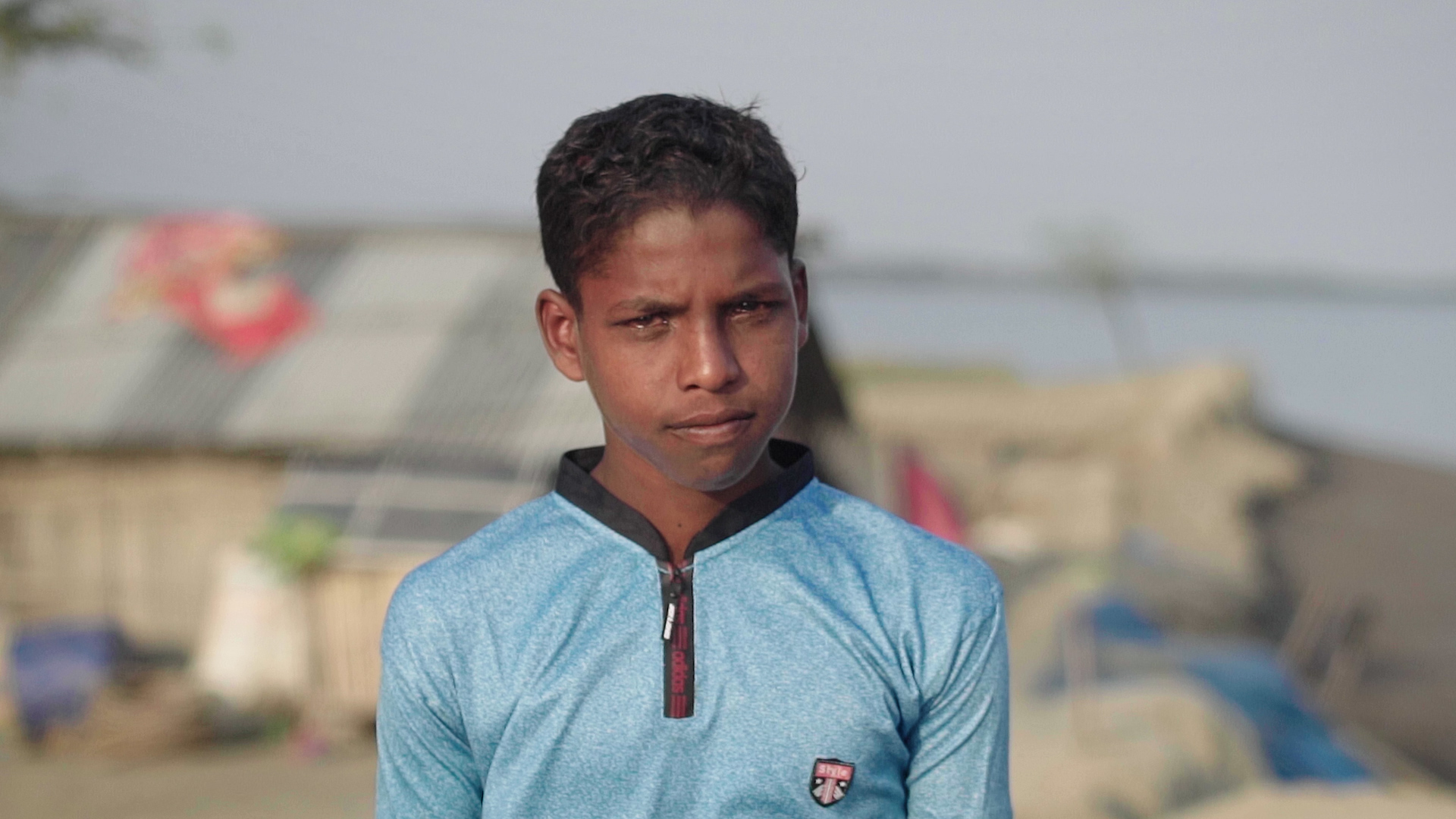
Nayeem. Credit: Environmental Justice Foundation
The cyclone destroyed more than the family home. Harun’s fishing net, the key to his income, was lost. “I left that net tied here beside the river. Coming back, I could not find it […] Income became very hard. However, I managed to make a net somehow again by collecting two thousand Taka.”
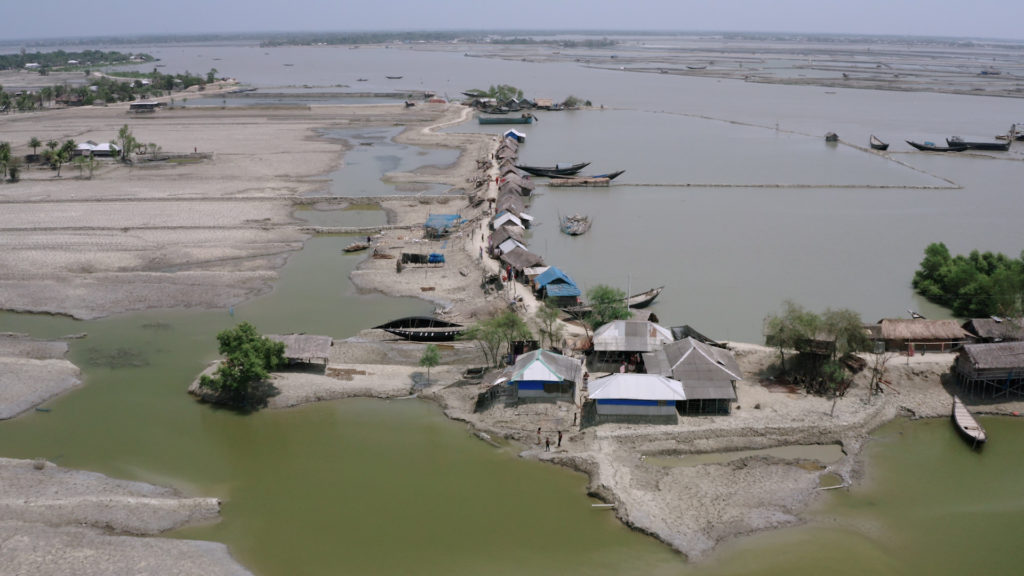
Flooding encompasses the homes in the region. Credit: Environmental Justice Foundation
After the cyclone, Harun says: “Everyone faced loss and damage […] Someone’s cows and goats were dead. Someone else’s chickens and ducks were dead. The damage has been more or less the same for everyone.”
Nayeem says he worried less before the cyclone. “We had a home, boat, and fishing net. We used to go fishing. After Amphan, the house was devastated, and the fishing net was gone. We couldn’t go to the doctor. Now we are in a worse place.” Having to move also meant that he and his siblings were unable to attend school.
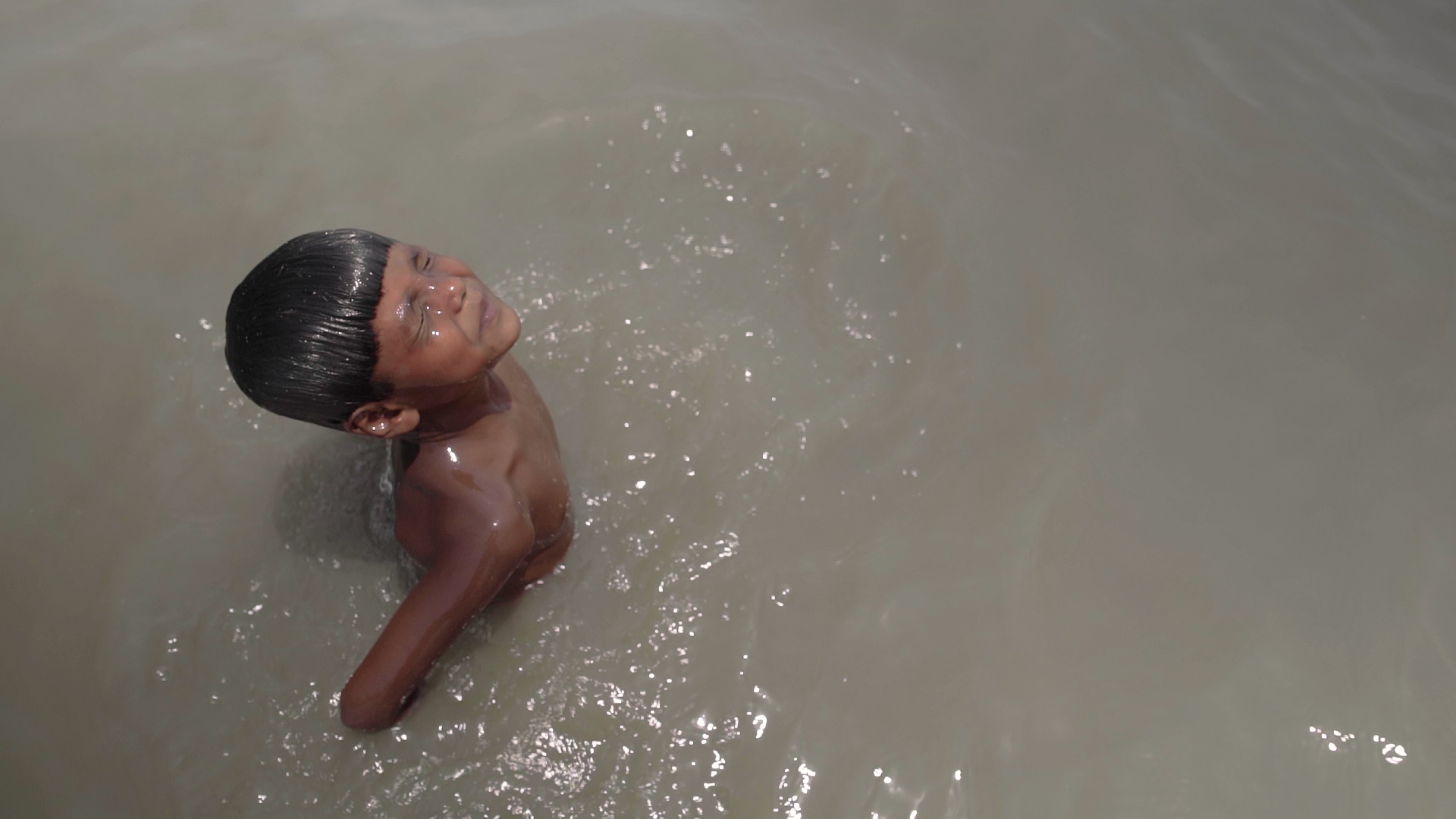
Nurnahar’s youngest son bathes in the river, which is becoming increasingly salinized. Credit: Environmental Justice Foundation
Rising sea levels are also driving salinization, which in turn impacts food systems. “People had mango gardens, coconut trees, date trees. Now there are almost no trees alive. So much saltwater entered and destroyed the vegetable gardens,” says Harun.
“We go to the other side of the river to bring water by boat, we fetch drinkable water from there and we take baths in river water, which is salty now,” says Nurnahar. “We cannot even bathe properly. It is next to impossible to fetch water from so far and then bathe with it [and have enough to drink as well].”
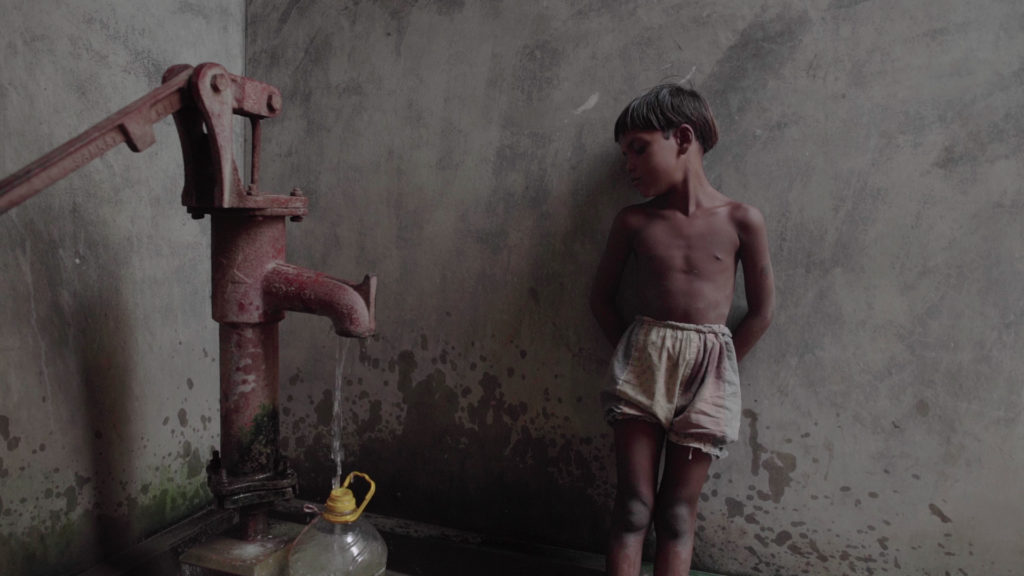
The family makes a trip across the river to fetch drinking water. Credit: Environmental Justice Foundation
Nurnahar and Harun both work to dig up the mud that surrounds them to help the community build a dam against storms. But they do not think it will be enough.
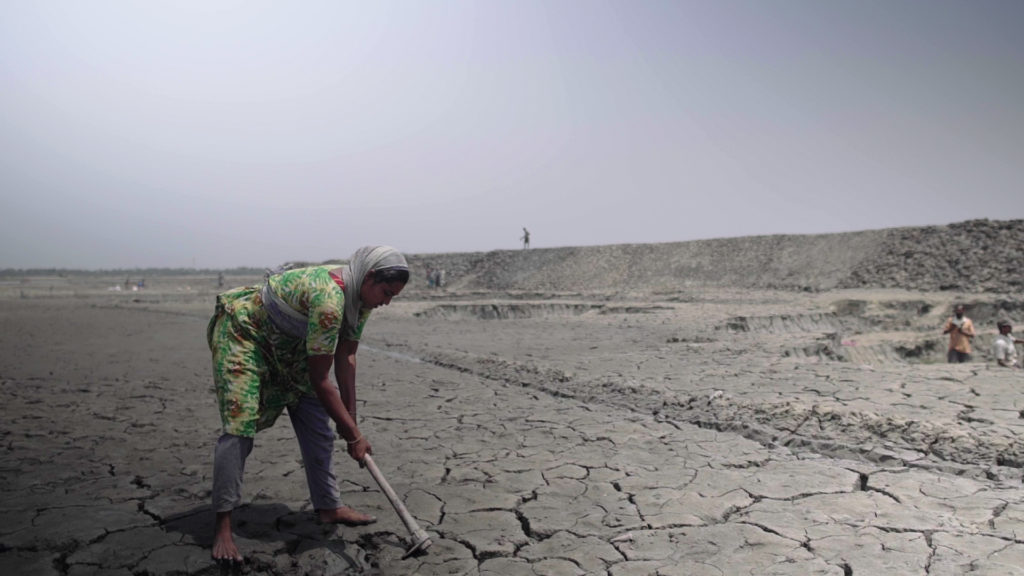
Nurnahar digs up the mud to help create the dam. Credit: Environmental Justice Foundation
“This dam will not remain sustainable in the future. It is not strong enough. It will break in a cyclone,” says Harun. “The cyclones are more frequent now. River water is rising high, storms are more frequent. The more time passes, the stronger the storms become. They were not so strong in the past. I don’t have anything that I can pass on to my children. If I had, would I build a house here?”
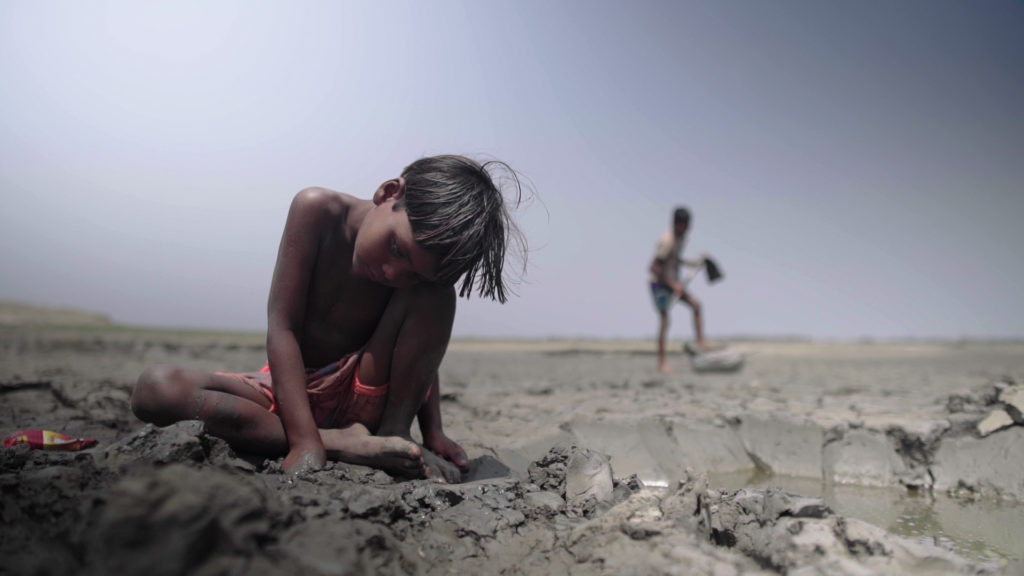
Nurnahar’s youngest son plays in the mud while Harun labors in the background to build the dam. Credit: Environmental Justice Foundation
Nurnahar says: “There is no safety for me and my family. I don’t know where I would go with my kids! There is no place for us to go […] We have become homeless, shelterless… How helpless do we need to become?”
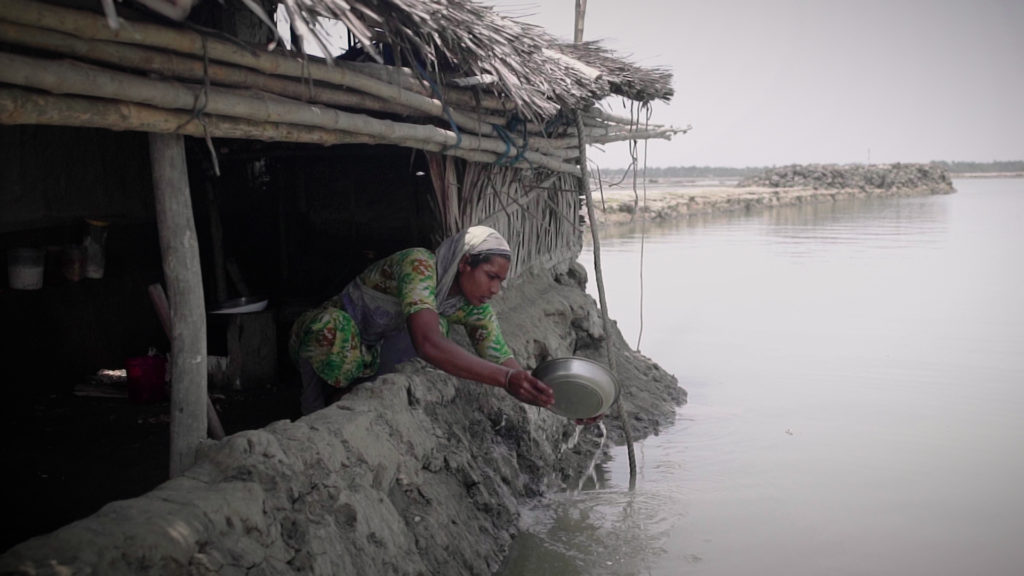
Nurnahar uses a pot to evacuate flood waters from her home. Credit: Environmental Justice Foundation
Daisy Brickhill, Ph.D., is the communications manager at the Environmental Justice Foundation, which works at the intersection of the environment and human rights to ensure sustainable security for all. You can follow her @daisb. This story was made possible by a grant from the Open Society Foundations.

